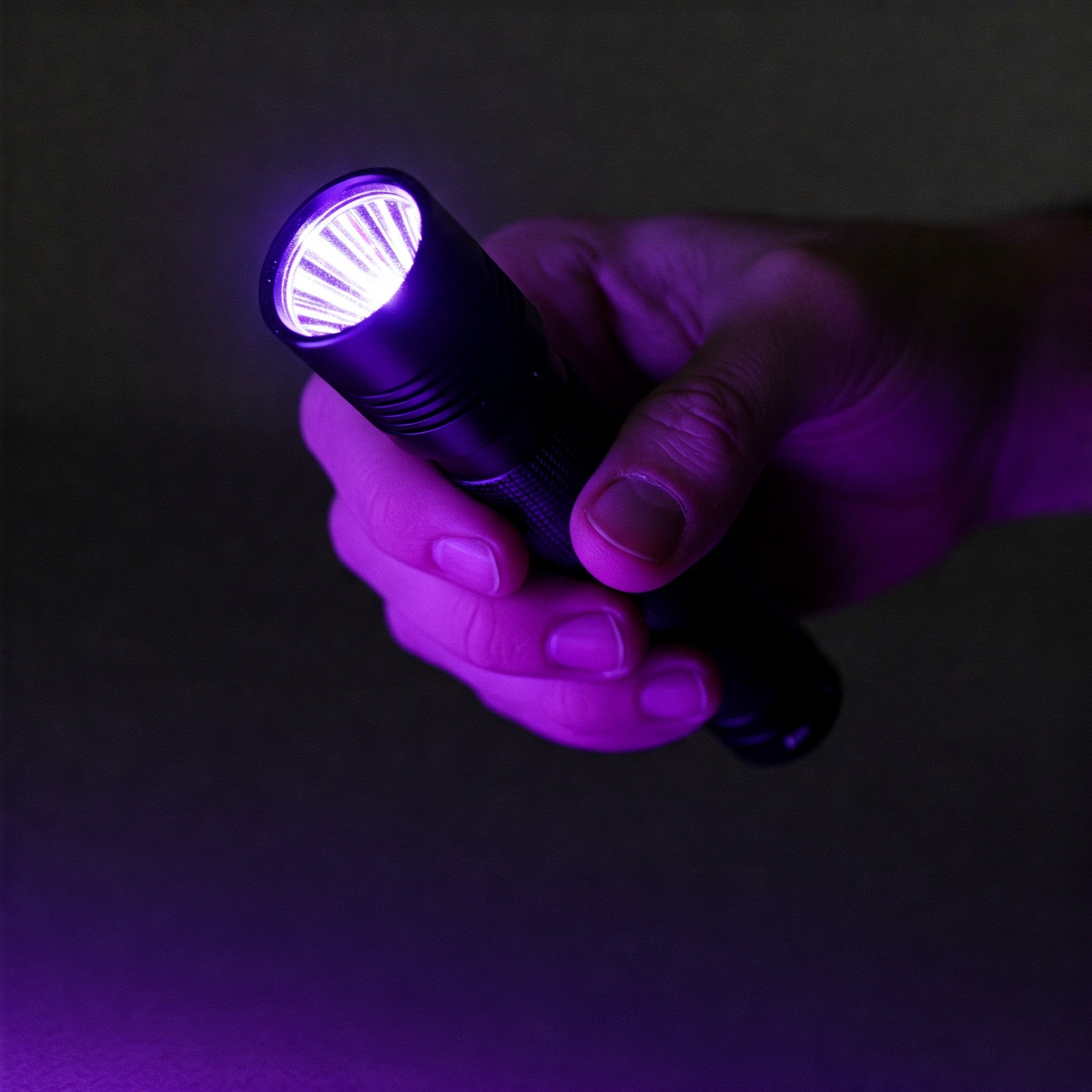The Science Behind UV Flashlights: How They Work and What Makes Them Unique
Posted by Raymond on 16th May 2025
The Science Behind UV Flashlights: How Do They Work?

Introduction
UV flashlights, often called black lights, have become essential tools for everything from detecting counterfeit money and pet stains to professional forensics and industrial inspection. But what exactly makes these flashlights work? What’s the science behind them, and why are certain UV wavelengths better than others?
In this article, we explore how UV flashlights work, what makes 365nm different from 395nm, and how to choose the best UV flashlight for your needs.
What Is Ultraviolet (UV) Light?
Ultraviolet light is a type of electromagnetic radiation with wavelengths shorter than visible light but longer than X-rays. It falls between 100–400 nanometers (nm) and is divided into three main types:
| Type | Wavelength Range | Common Use |
|---|---|---|
| UVA | 315–400 nm | Used in UV flashlights, tanning beds |
| UVB | 280–315 nm | Can cause sunburn, used in medical treatment |
| UVC | 100–280 nm | Germicidal lamps, water purification |
UV flashlights typically emit UVA light, especially around 365nm or 395nm, which are ideal for fluorescence applications.
How Do UV Flashlights Work?
A UV flashlight uses LEDs (light-emitting diodes) engineered to emit ultraviolet light. When this light shines on certain substances, they absorb the UV radiation and re-emit it as visible light—a phenomenon called fluorescence.
This is how you can suddenly see:
-
Pet urine on carpets
-
Hidden ink on documents
-
Fluorescent minerals
-
Bodily fluids in forensic investigations
365nm vs. 395nm UV Flashlights: What’s the Difference?
| Feature | 365nm UV Light | 395nm UV Light |
|---|---|---|
| Visibility to Eye | Nearly invisible | Slightly purple glow |
| Fluorescence | Stronger, purer fluorescence | Moderate fluorescence, with more visible light |
| Use Case | Professional forensics, quality inspections | General home use, scorpion detection, currency |
| Price Range | Higher due to filter lenses and purity | More affordable |
? Related Guide: How to Choose a UV Flashlight for Pet Stains or Forensics
Real-World Applications of UV Flashlights
| Application | Example Use |
|---|---|
| Forensics & CSI | Detect blood, semen, saliva at crime scenes |
| Currency Verification | Spot counterfeit bills using UV ink |
| Pet Stain Detection | Reveal dried urine on carpets or furniture |
| Mineral Hunting | Make certain rocks and minerals glow |
| Hotel Room Inspection | Sanitary inspection by identifying biological stains |
| Automotive Leak Detection | Detect leaks using UV dye |
Why Filtered UV Light Matters
High-quality 365nm flashlights often include optical filter lenses to block visible light, allowing only pure UV to shine through. This improves the contrast and helps you detect weak fluorescence more clearly, especially useful in:
-
Art restoration
-
Antique authentication
-
Lab inspections
Conclusion
The science behind UV flashlights is rooted in the natural fluorescence of certain materials under ultraviolet radiation. Whether you're a hobbyist looking to identify minerals or a CSI professional examining a crime scene, understanding how different wavelengths work—and what makes high-quality UV flashlights stand out—is key to effective use.
If you’re seeking a reliable, high-precision UV flashlight, explore the Tank007 UV Flashlight Collection for professional-grade tools built for serious applications.

